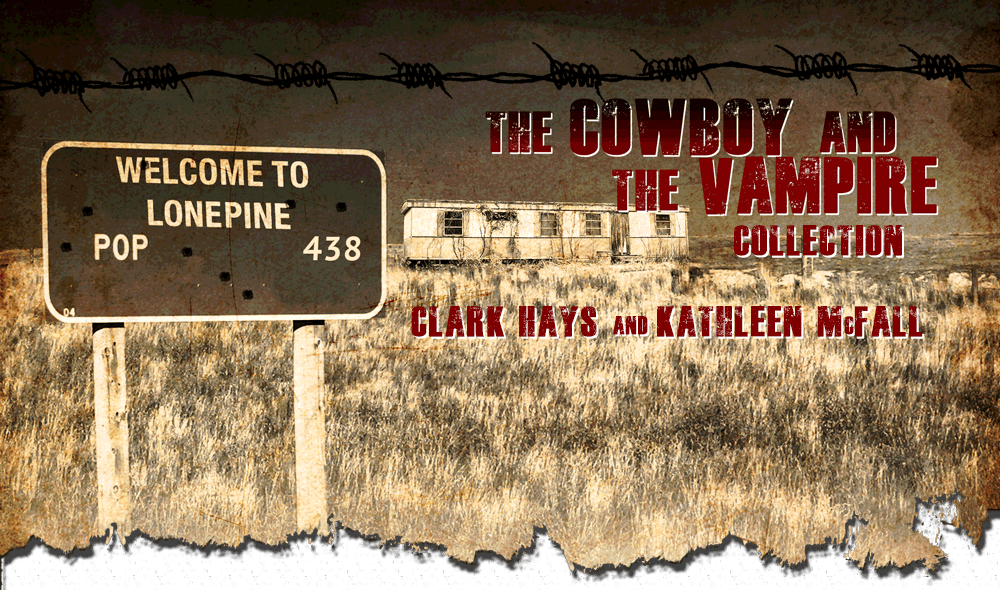Home > Soapbox > Research by proxy
Research by proxy
When you write about ostensibly mythic creatures, actual research is next to impossible. That’s one of the challenges of The Cowboy and the Vampire series.
Cowboys are easy. I grew up on a ranch in Montana and still remember what it’s like to ride and rope and brand. Plus, Kathleen and I live in the Pacific Northwest which means we are never more than a half day’s drive from cowboy country (central and south-eastern Oregon) where actual cowboys and cowgirls can be found in run-down bars listening to honky-tonk music and drinking beer and after an actual long day of working on a ranch.
Vampires, however, are a bit tougher to profile. I can’t just hop on the bus and get off at Dracula’s castle. That’s why I do research by proxy. The  vampires in our books are evolutionarily superior beings, stronger than humans and practically immortal, who just happen to need human blood to survive. That makes them a super predator. To introduce an element of reality, we read all the stories and legends we could get our hands on, and I read a lot of nonfiction books about species that hunt — wolves and grizzlies and, one of my favorites, Siberian tigers (The Tiger: A True Story of Vengeance and Survival).
vampires in our books are evolutionarily superior beings, stronger than humans and practically immortal, who just happen to need human blood to survive. That makes them a super predator. To introduce an element of reality, we read all the stories and legends we could get our hands on, and I read a lot of nonfiction books about species that hunt — wolves and grizzlies and, one of my favorites, Siberian tigers (The Tiger: A True Story of Vengeance and Survival).
But to really pull my share and write convincingly about vampires, I wanted to get inside the heads of beings that completely lack empathy and operate without the “normal” kinds of moral calculations that hold humans back, erhmm, keep society functioning. That brought me to books about sociopathy and psychopathy and, ultimately, to Cruelty: Human Evil and the Human Brain by Kathleen Taylor.
Despite the dark topic, this is now one of my favorite books of all time. I learned much more than just what might motivate a vampire, I learned what it is that makes us human, and how it works in our brains and in society. Here’s an excerpt of my review:
A margin-wrecker: the best kind of book is one that begs to be marked up
It’s odd — maybe not that odd — that a book about cruel, base and disgusting acts would emerge as one of my favorites of all time.
The author, Kathleen Taylor (funny that two of my favorite authors are named Kathleen) is a neuroscientist at Oxford. She brings together the latest in the fledgling field of neuroscience with evolutionary theory, social and cultural anthropology and biologic processes to bring cruelty to life — what it is and why we have it — and helps readers arrive at a better understanding of what it means to be human. She has a vivid, technically precise and funny writing style that kept me hooked and kept me scribbling frantically in the margins as new ideas skittered away.
Cruelty, she argues, is linked to the uniquely human desire to predict and control the natural world. That can be as basic as avoiding dangerous predators or as refined as protecting belief systems important to our culture. And, she says, “…our hunger for control does not demand that our predictions are actively confirmed, just that they remain unchallenged.”
Challenged, we are “…vulnerable to symbolic threats which cause us no physical harm.” But because of the way our brains are wired, “…conflict feels stressful, like pain, and most people prefer to avoid it.”
According to Taylor, we act against symbolic threats the same way our bodies act against dangerous diseases – “learn the warning signs, avoid the source, quarantine the infected and expel the contaminant.” It’s the same approach, and the same language (a blight upon our culture, threats to our way of living), that have been used to tragic result for those considered dangerous for centuries.
It’s all tied to our biologic responses because, she argues, the symbolic brain is an extension of the physical brain. The same systems we use to deal with ingesting putrid food are high jacked by the brain when we encounter a putrid belief system that is, challenging to our symbolic health. It’s the only system we have in place to deal with a threat that makes us feel sick.
Check out the full review on Goodreads and if you are in the market for a nonfiction tour through the seediest parts of the human brain, check out her book.
What books would you recommend for authors writing about the undead? – /CH
